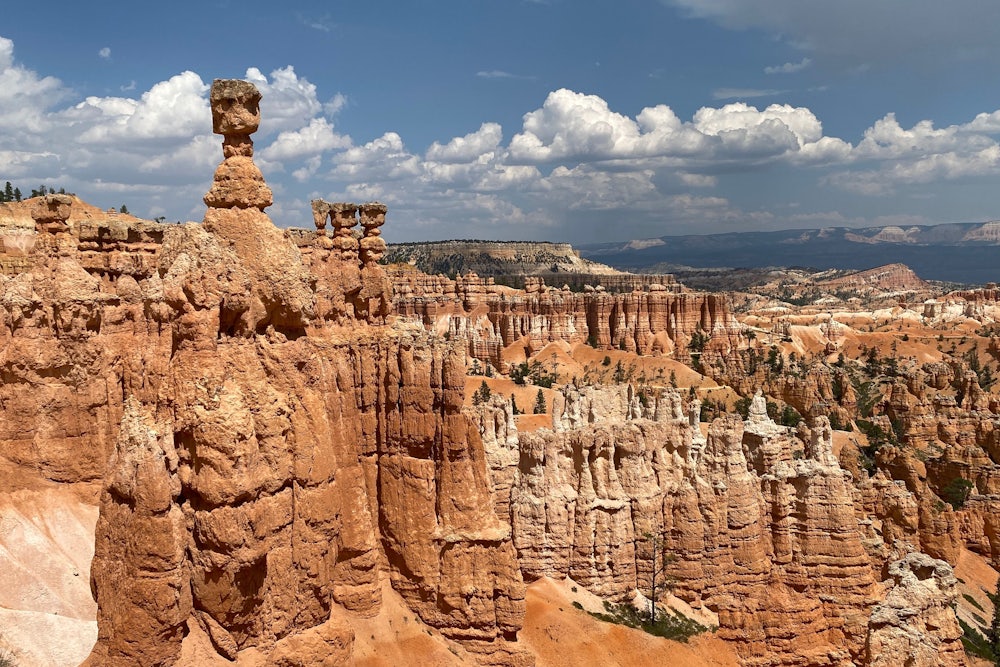The Trump administration’s goal for the Interior Department was clear the moment the former president took office: From top to bottom, the Interior’s mission was to eat away at itself bit by bit until there was nothing left at the D.C. office save for former Secretary Dave Bernhardt’s Big Oil rolodex and this somehow official portrait of also former Secretary Ryan Zinke. While the Trump Interior fell just short of that goal, it did manage to hollow out one of the most important agencies when it comes to permitting and regulating the future of energy production on federal lands: the Bureau of Land Management. Now the Biden administration is left to pick up the pieces.
On Tuesday, the Senate Committee on Energy and Natural Resources held a hearing for President Biden’s nominee to head BLM, Tracy Stone-Manning, as well as for three nominated candidates for positions within the Department of Energy. Due to the crowded nature of the hearing, the two-hour questioning was varied and unfocused, with the topics of discussion ranging from nuclear testing in the Nevada desert to Republican concerns about the nominees’ anti-conservatism. But what it did highlight is the mountain of work that stands before BLM—starting with filling out its mostly empty new headquarters.
In 2019, Bernhardt and the Trump White House relocated the BLM headquarters from D.C. to Grand Junction, Colorado, notifying hundreds of employees in November that they had 30 days to decide whether to move. On Tuesday, hours before the committee hearing kicked off, Colorado Newsline published a report on the new Grand Junction office space, where the BLM now shares a building with Chevron and a subterranean mapping company, among others. Just three BLM staffers currently work there. (On the whole, BLM has roughly 9,000 employees spread across the nation at state-specific offices.)
Bernhardt and his agency heads sold the relocation to BLM staff, Congress, and the public as a necessary attempt to place top BLM officials closer to the West, where the vast majority of its managed land is held. As the agency’s official statement on the matter read, it planned to leave only 60 positions behind in D.C., while 200 staffers were expected to move west, and 76 employees were scheduled to be reassigned to BLM state offices. This was a plan that ostensibly came from the White House, but it also happened to align perfectly with the desires of Bernhardt and BLM’s then–acting director, William Perry Pendley—a man who spent the 1980s working for the Reagan administration, the ’90s writing in a pseudoscience cult magazine, and his recent years being promoted up through Trump’s BLM while simultaneously complaining at conferences that “the deep state is alive.”
The trio of officials recognized that a hastily executed cross-country move for longtime staffers would mean many of those employees would decline to make the move, leaving the agency lead coordinator roles woefully understaffed. That is precisely what happened. Despite Pendley claiming that two-thirds of the D.C. staff were expected to make the move, the true number, as reported by Colorado Public Radio in January and confirmed by Newsline this week, was much lower. Per CPR, only 41 BLM employees relocated to Western offices overall (with 38 of those heading for BLM state offices), while out of “the 328 positions slated to move out West when the move was announced, 287 headquarter employees chose to retire or found new employment between July 2019 and December 2020.”
Anyone paying attention saw this coming. In audio of an internal meeting from 2019 concerning the move obtained by High Country News, staffers castigated Pendley’s excuses and explanations, with one longtime employee stating bluntly to BLM leadership, “Y’all didn’t take anybody in this room into consideration.” Even higher-ups, like Deputy Director of Operations Mike Nedd, who had been at BLM for 28 years and was initially offering a “just following orders” approach to staff questions, eventually conceded that the move was a bad idea. “If I had to make a decision, I probably would have made a different decision,” Nedd said.
This is the BLM that Stone-Manning, if she is confirmed, will step into. During her hearing on Tuesday, Colorado Senator John Hickenlooper—who supports the relocation, as it landed in his state—asked what Stone-Manning’s feelings were on the new headquarters. “It’s my understanding that the department and the secretary are reviewing that, and they are surveying employees,” Stone-Manning responded. “If I have the honor of being confirmed and get there in a timely way, you have my commitment to dive in and carry the folks of Grand Junction and their concerns with me to the consideration.”
Beyond the headquarters issue, Stone-Manning and BLM have to figure out what to do about the avalanche of oil and gas leases the Trump administration rushed through in its final months and what to do about leases and permits going forward. As E&E News reported in May, the Interior has issued close to three dozen leases since President Biden signed his moratorium on new leases on federal lands in January, most of them in New Mexico, while hundreds more await approval across the West. According to the bureau’s own data, between February and April, BLM green-lighted 1,179 drilling permits nationwide. A spokesperson for BLM told E&E that its team is “actively reviewing the leases from the December 2020 lease sales to ensure they comply with applicable federal laws and regulations and in light of various pending lawsuits”—a vague response considering the overwhelming need to curb all new oil and gas operations to meet the international goal of keeping global warming below 1.5 degrees Celsius (2.7 degrees Fahrenheit) by the end of the century.
The agency Stone-Manning seems poised to take over is filled with contradictions. When Jacobin magazine recently compared the Biden BLM’s rate of permit approval to that of Trump’s, it found that the 1,179 drilling permit approvals issued under Biden in a three-month span is just a shade under the three-month mark of 1,400 set by Trump last year. (The administration’s Bureau of Safety and Environmental Enforcement is also hitting similar marks in approving offshore drilling permits.) Meanwhile, a collective of over a dozen states is currently suing the federal government over Biden’s moratorium on new oil and gas leases, seeking an injunction on the executive order so as to fully reopen the process. And when it comes to renewable energy, the bureau’s role in the ongoing lithium boom has to this point consisted of ignoring the environmental, cultural, and religious concerns raised by sovereign tribal nations.
The Biden administration clearly sees the need for a strong BLM; in its recently released budget, the White House called for the bureau’s funding to be increased by 24 percent, along with bumps for other agencies within the Interior. Likewise, the Interior is in the process of completing a full review of its federal oil and gas permitting and leasing practices, with the release of the department’s findings slated for sometime this summer. But the White House, Interior Secretary Deb Haaland, and Stone-Manning (should she be seated) need to decide what, exactly, they plan to do with those funds and with their review. If the answer is to continue doing business as usual, rubber-stamping leases and drilling permits in numbers similar to the Trump administration’s, then the extractive landscape the Biden administration leaves behind won’t look much different from the one it inherited. After all, the entire purpose of the Trump Interior’s final six months was to build a stockpile of drilling operations so that the gas and oil industry could weather Biden’s first term largely unscathed. As with Haaland, Stone-Manning seems well equipped as an individual to take on the task of reorienting BLM toward a sustainable future. What’s left to be seen is whether this administration is willing to let them do that work.








